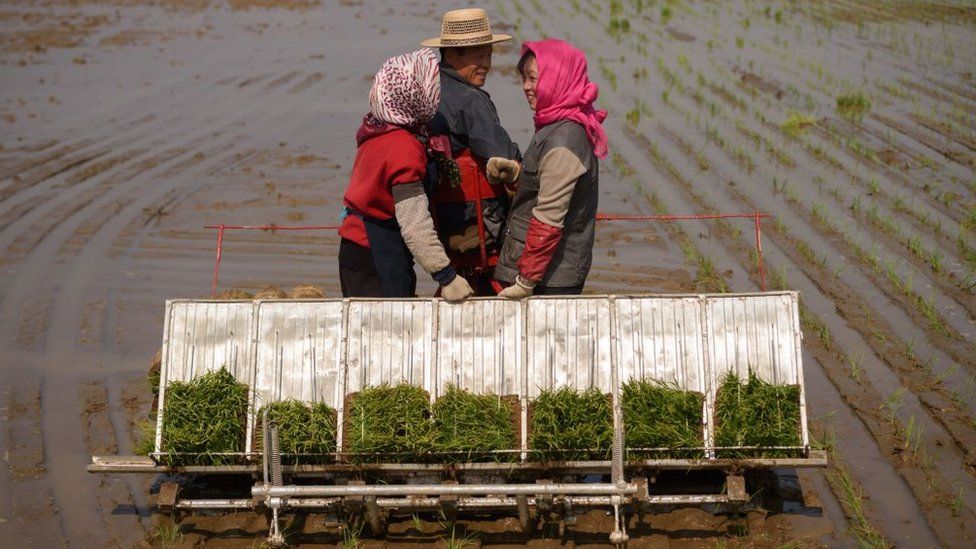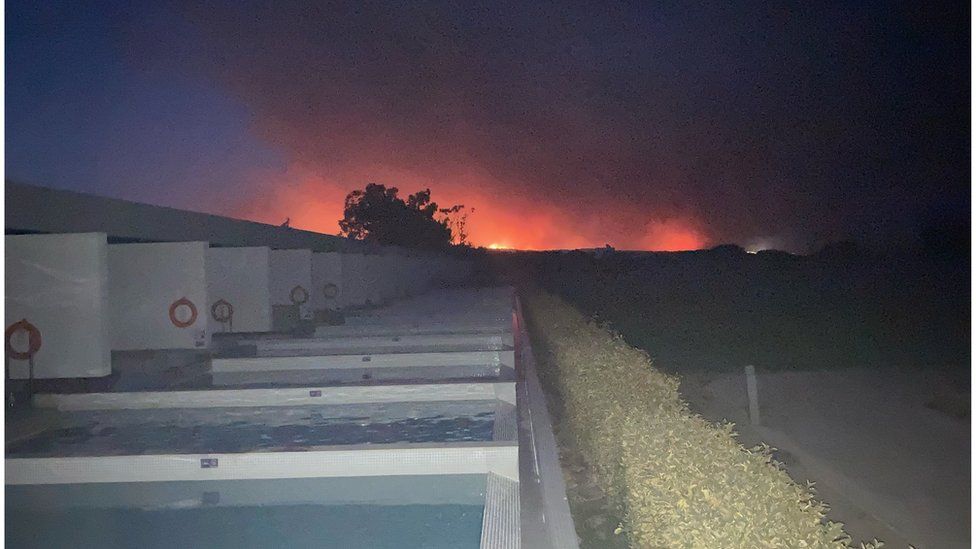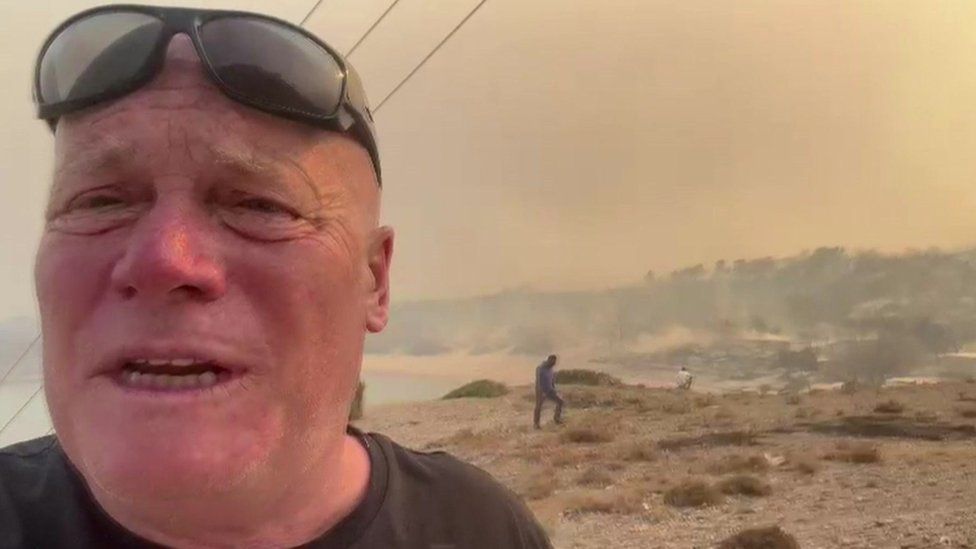Experts claim that North Korea is going through a severe food crisis.
Although the nation has long-standing food shortages, recent border restrictions, bad weather, and sanctions have made matters worse.
A "fundamental change" in agriculture policy will be discussed at a meeting of top officials expected to take place at the end of February, according to state media.
In light of "pressing" farming issues, this is a "very important and urgent task," according to news aggregator KCNA Watch.
The announcement coincides with Pyongyang's ongoing military prowess.
According to reports, South Korea's unification ministry has also raised the issue of food shortages and requested assistance from the World Food Programme (WFP).
The North produced 180,000 tonnes less food in 2022 than in 2021, according to satellite images provided by the South Korean government.
The WFP expressed concern in June about the possibility that extreme weather events like drought and flooding could lower the production of both winter and spring crops. Additionally, late last year, state media reported that the country was going through its "second worst" drought on record.
Food prices have increased this year as predicted due to poor harvests, and people have been turning to less expensive options, according to Benjamin Katzeff Silberstein, a journalist for the North Korea-focused publication 38North . org.
According to Rimjin-gang, a North Korean magazine published in Japan, corn prices have increased by 20% at the beginning of 2023 due to rising demand for the less popular but more affordable staple.
According to Mr. Silberstein, "if people are buying more corn it means food in general is getting more expensive, and staple foods like rice in particular.". In the present, a kilogram of the crop costs roughly 3,400 North Korean won (£3.10; $3.80).
One of the poorest nations in the world is North Korea. There are few recent estimates, but the CIA World Factbook projects its gross domestic product per person to be around $1,700 in 2015.
However, given North Korea's murky economy, the precise situation and numbers are unclear.
According to James Fretwell, an analyst at NK News, "there is no way for any outsiders to go into the country and check for themselves what the situation is due to North Korea's strict Covid border measures on goods and people.".
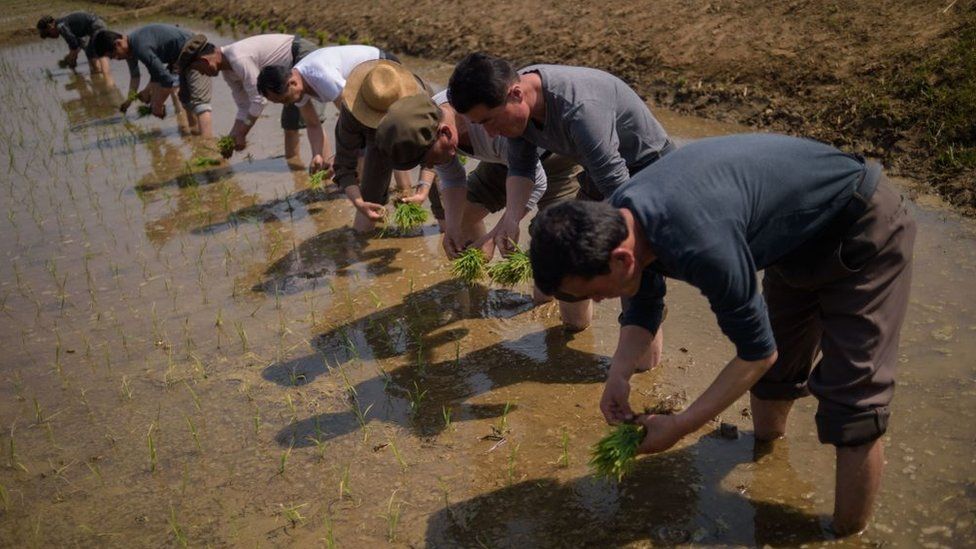
Additionally, he added, these measures have made it more challenging for organizations outside of North Korea to provide assistance when a crisis arises.
Since January 2020, North Korea has imposed severe restrictions on cross-border trade and travel.
As the country director for South Korea for the non-profit Liberty in North Korea (Link), Sokeel Park characterized the regime's response to the pandemic as "extreme and paranoid.".
According to Mr. Park, whose organization assists in resettling North Korean refugees in South Korea or the US, the availability of essentials in the North has been declining ever since the pandemic began. Link has heard numerous reliable accounts of people starving to death, according to Mr. Park.
Additionally, the amount of humanitarian aid provided to the nation by the international community has significantly decreased. According to the UN Office for the Coordination of Humanitarian Affairs, North Korea received $2.3m (£1.9m) from international organizations and other agencies last year, down from $14m in 2021.
While border closures may have contributed to this, some aid workers told the BBC that tighter international sanctions in response to North Korea's military provocations have also made it more difficult to deliver humanitarian aid.
However, there are some indications that cross-border business is picking up again. China, which accounts for more than 90% of North Korea's trade, has resumed some truck travel, according to a Nikkei Asia report from last week.
However, this does not necessarily imply that the standard of living for common North Koreans will rise.
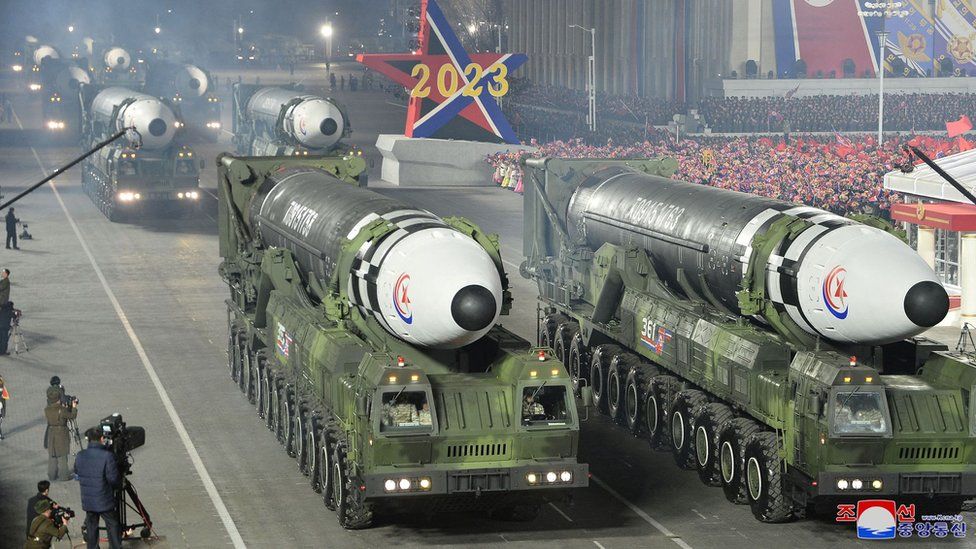
According to Mr. Park, the regime has spent a lot of money on propaganda and missile development at the expense of society. More than 70 ballistic missiles were launched by Pyongyang last year, setting a new record. Among these were intercontinental ballistic missiles, or ICBMs, capable of reaching the US mainland. At a military parade earlier this month, it flaunted the largest-ever collection of ICBMs.
While acknowledging how difficult life is for the average North Korean, the regime still places a high priority on missile launches, propaganda and pageantry for the Kim family, and tight controls on the populace, Mr. Park continued.
A famine as devastating as the one the nation endured in the mid- to late 1990s, known in official documents as the "Arduous March," is feared to occur as a result of the situation on the ground continuing to deteriorate. There have been between 600,000 and one million deaths, according to estimates.
We don't appear to be at the famine's proportions from the 1990s, according to Mr. Silberstein. "But the margins are very thin. Therefore, even a slightly reduced food supply could potentially have negative effects.
. "

